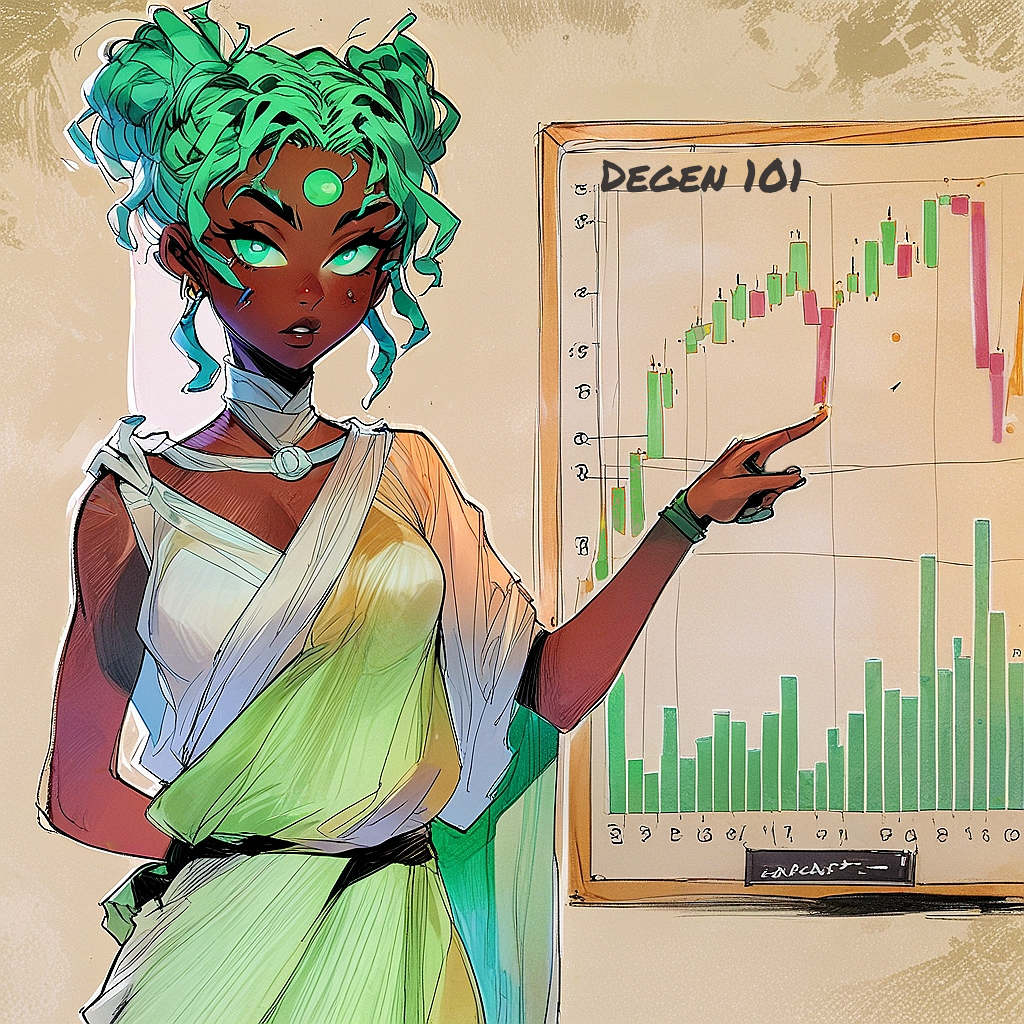Decentralization is a word that is thrown around with the frequency of a teenager who just picked up a new favourite slur. Check any #web3# project’s #docs# and you’ll invariably find it.
Whether the word decentralization is in any way applicable to the project is irrelevant. They’re gonna use it.
So what exactly is decentralization, and how common is it in web3?
Let’s start in the way of terrible best man speeches all over the words by using a dictionary, or in this case Wikipedia, definition:
“Decentralization or decentralisation is the process by which the activities of an organization, particularly those regarding planning and decision-making, are distributed or delegated away from a central, authoritative location or group and given to smaller factions within it.”
So, how does this apply to crypto? Let’s find out.
Note: In places we talk about “major blockchains”. This can mean some different things to different people but, for clarity, we’re going to say it means Bitcoin, Ethereum, and Solana for the purposes of this article. Many or all of these things will apply to other blockchains as well but we can’t account for every single blockchain or this article would never end.
Decentralization at the core of blockchain: Nodes
So almost every major #blockchain# was founded on a principle of decentralization. On a blockchain such as Ethereum, Bitcoin, or Solana the chain itself is decentralized. What does this mean?
Understanding this requires an understanding of how blockchain transactions work. We cover this in slightly more detail in Introduction to Cryptocurrency and Types of Cryptocurrency: Coins and Blockchain but the pertinent part is this:
Major blockchains process their transactions not via a single entity, but rather through “distributed nodes”. Here’s how it works;
- Transaction Validation: When you send crypto on a blockchain your transaction gets broadcasted to the network. The nodes, which are computers all over the world, receive your transaction and check it out. They make sure you actually have the funds you’re trying to send and that everything looks legit.
- Consensus Mechanism: The network needs to agree that your transaction is valid. Depending on the type of blockchain, nodes will use different methods to reach this agreement. (See: Types of Cryptocurrency: Coins and Blockchain)
- Recording Transactions: Once your transaction is validated and the network reaches “consensus”, it gets bundled into a new block. This block is then added to the blockchain, which is like a digital #ledger# that keeps a permanent record of all transactions.
- Propagation: Finally, the new block, including your transaction, is spread across the entire network. All the nodes update their ledgers to reflect the latest block, ensuring everyone has the same information.
This process is a huge part of what makes blockchain decentralized. Instead of a single central authority (like a bank) controlling everything, separate nodes, all over the world, work together to validate and record transactions.
This distribution of tasks and power means no single entity can manipulate the system. It’s like having a global team of accountants all keeping an eye on the books, ensuring everything is accurate and above board.
It is important to note that anyone can run a node.
Who controls blockchains?
Changes to major blockchains are decided through a consensus mechanism involving the network’s participants, primarily the nodes. So what does that mean? Well it works something like this:
- Proposals for changes, such as software updates or protocol adjustments, are typically made by developers.
- These proposals must then be reviewed and agreed upon by the network’s stakeholders, which can include miners, validators, and node operators, depending on the blockchain’s structure.
- Sometimes when a large minority want a change but it doesn’t pass a vote we have historically seen blockchains #fork#.
The process often involves voting, or reaching a majority consensus, to implement the changes.
This process, also known as #governance#, is another key component in what makes major blockchains decentralized. You can read more in our article Governance: What it is and why you probably don’t have it.
So all crypto projects are decentralized?
Absolutely fucking not.
One thing to note, before we continue, is that being “decentralized” isn’t a necessity in order for something to be a good project (well, in our opinion at least).
Being fully decentralized (as described above) is a monumental task; one that even some well funded projects take years to achieve.
For example Metis (the home of VestaDAO) is a #layer 2# network with some fairly substantial money behind it. It took years for it to get to the point it could start decentralizing it’s #sequencers#, and is still fully centralized in terms of its direction. It is the first of all #layer 2# network’s to even get this far – this should illustrate what a huge task it is.
Are any crypto projects decentralized (apart from layer 1 blockchains)?
Yes.
Some of the older projects in particular have reached this point. A very notable example is uniswap, one of the most popular #DEX# projects. Uniswap requires a majority vote from its token holders for any changes to its smart contracts, anyone can take part in using it either by swapping tokens on it or by providing #liquidity#. Uniswap’s smart contracts automatically execute transactions; there is no opportunity for an “employee” to interfere.
Please note: many projects use part or most of uniswap’s codebase. This does NOT mean those projects are also decentralized in the same way.
On the other hand, the vast majority of crypto projects, both big and small, would not qualify for a true meaning of decentralization. Many, however, qualify in some quite meaningful ways; and this is where understanding the different meanings of decentralization is important.
The many meanings of decentralization:
So we quipped in the title that this word has 1,000 definitions. It probably isn’t quite that many, but there are a lot. These range from the comprehensive, as in the case of #layer 1# blockchains, to meaning literally fuck all. We can’t possibly cover all the definitions but below are some of the main ways it is used.
Note: a project having one of these does not mean it has any of the others.
Governance:
Governance is something we talked about a bit above; the process by which projects or networks put the decision making process in the hands of its users. This is usually accomplished by way of a vote.
Governance itself is an often misused word and is additionally a very complicated subject. We have given it its own article which you can find here: Governance: What it is and why you probably don’t have it.
It is important to note that many projects claim to offer governance but simply don’t. Governance votes are often about either trivial things or issues in which popular opinion is so one sided that the vote will always go that way.
Unless users can submit their own proposals, that can be freely voted on, then “governance” doesn’t even come close to decentralization.
Trustless Transactions:
In Cryptocurrency security: Is crypto safe? we talk about the way in which blockchain is #trustless#. Projects or #dApps# built on top of blockchains can benefit from this BUT do not always do so.
When you use a project’s #smart contract# you are trusting that project, and it is often controlled by a single group or individual. This is not always the case in terms of #revoked# smart contracts; you’ll need to check for yourself if this is the case.
A truly trustless project or dApp will have mechanisms in place that not only ensure its smart contracts carry out transactions in a way that cannot be interfered with, but ALSO ensure that those smart contracts cannot be tampered with without genuine consensus vote.
One very important aspect of this is ensuring that supply of the #governance token# is suitably dispersed; if one or two people have enough tokens to sway any vote then it isn’t particularly democratic or decentralized.
Literally just that it’s a crypto project:
Some devs use decentralization like a meaningless buzzword. A theme you might notice if you read enough of this site is that this is very common; a lot of projects like to take advantage of the fact that the majority of users don’t fully understand these concepts.
Let us be clear; just because a project is built on a decentralized blockchain does NOT mean that the project itself is decentralized.


